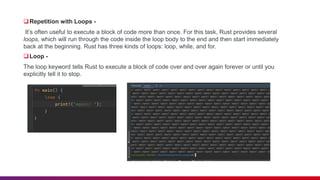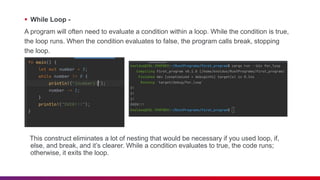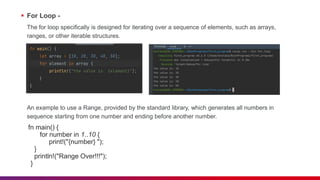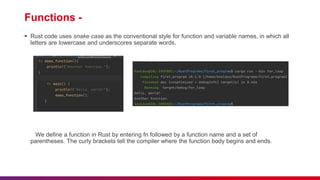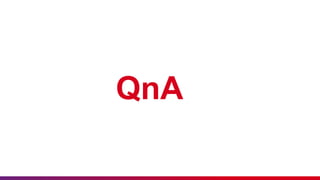The document serves as an introduction to the Rust programming language, covering its history, key features, and practical aspects including setup, ownership, data types, control flow, and function definitions. Rust is designed for systems programming with a strong focus on memory safety and performance, addressing issues found in languages like C and C++. It provides a structured environment that helps developers avoid common programming errors through its unique ownership and borrowing system.


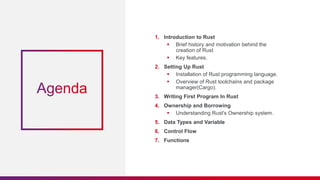
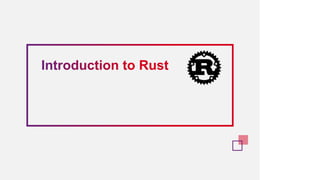
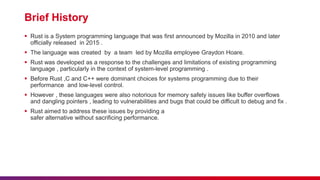




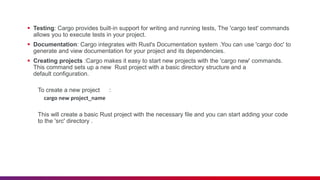
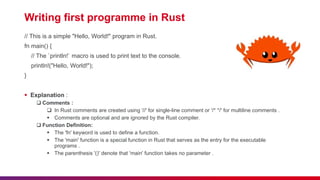

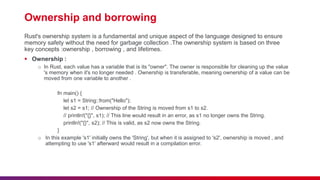
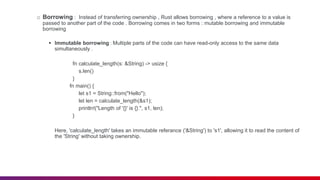
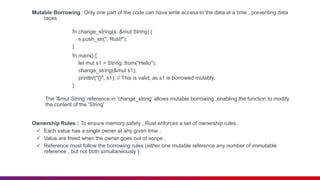


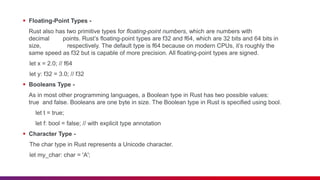

![ Arrays -
Another way to have a collection of multiple values is with an array. Unlike a tuple, every element of an array
must have the same type. Unlike arrays in some other languages, arrays in Rust have a fixed length. Arrays
are useful when you want your data allocated on the stack rather than the heap or when you want to ensure
you always have a fixed number of elements.
We write an array’s type using square brackets with the type of each element, a semicolon, and then the
number of elements in the array, like so:
let a: [i32; 5] = [1, 2, 3, 4, 5];
You can also initialize an array to contain the same value for each element by specifying the initial value,
followed by a semicolon, and then the length of the array in square brackets, as shown here:
let a = [3; 5];
This is the same as writing let a = [3, 3, 3, 3, 3]; but in a more concise way. You can access elements of an
array using indexing, like this:
let a = [1, 2, 3, 4, 5];
let first = a[0];
let second = a[1];](https://image.slidesharecdn.com/introductiontorust-240312095723-7815b039/85/Introduction-to-Rust-Presentation-pptx-20-320.jpg)

